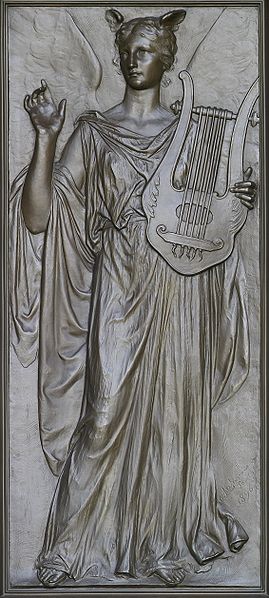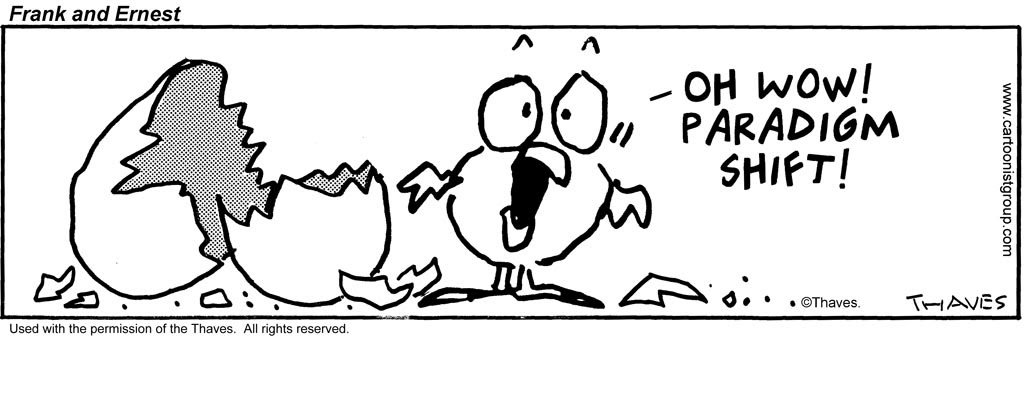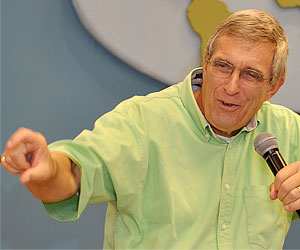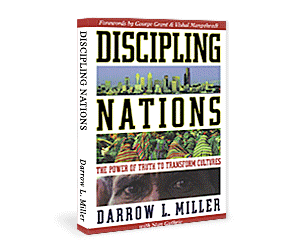Imagination is one of the Creator’s most valuable gifts to his human creatures. When imagination is nurtured, we flourish. When it is suppressed, we languish.
My friend, Ana, spent several days sitting and talking with a group of young teen girls.
I asked them, “Do you have dreams?” “We stop dreaming when primary school is over,” they told me. “To continue our education we would have to leave the village. We never leave to discover what is outside, so this is our destiny.” I didn’t know if I should cry or shout. I was so angry to see the devil blinding the minds of these young girls, deceiving them to believe that there is no purpose to life—except watching for the sun to rise and waiting to die.” Her haunting question: “How can anyone live this way?”
Some cultures crush the wonder and dreaming out of their children. Some people choose to live solely in the present, without joyful celebration of the past or hopeful dreams of the future. As the Proverbs puts it, “Where there is no vision, the people perish!” This is true for individuals and for entire societies.
Dreaming is a universal capacity because all human beings are made in the image of the God who dreams. But dreaming is clearly not a universal practice because many cultures do not encourage people to dream.
In his 12/23/2013 blog post, “Imagine That” writer Mike Metzger says that “the path to reasonable faith begins with widening the imagination.” Here’s another way to say that: An enlarged imagination is the path to a new future.
We were made to use our imagination to rule the earth.
Reading Metzger’s piece, I reflected on the relationship between our imago Dei nature and our own human imagination.
Genesis reveals (see 1:26-27; 5:2; 9:6) that man is made in the image of God. The New Bible Dictionary states: “Man is the corporeal image of the incorporeal God. Man’s role as ruler of the earth is established by his creation as God’s image (1:27). Elsewhere in the ancient Near East it is usually the king who is said to be the image of God, but in Gn. 1 it is mankind as a whole that is God’s vizier and representative.”
Wonder of wonders: we are all “royalty.” We are all vice-regents of God, created in his image, created to use our imaginations to rule over the earth. In faith, we dream dreams and then, like the Primary Creator, we–the secondary creators–bring the dreams of our imagination into reality by writing stories, designing buildings, creating meals, composing music, planting gardens and vineyards. When we expand the horizons of our minds we expand the horizons of creation.
Not every worldview allows for imagination. Animists are bound by a universe of chaos, without order. They may understand the concept of myth and mystery, but lack the concept of an ordered mind to effectively create in the external world. In contrast, the atheist’s mind is bound by nature and focused on material things; little place is given to the imagination.
The ultimate imagination and source of our ability to dream is our Creator God. God’s imagination and the creation of the universe involved:
– Forming an intention – Conceiving of the universe – the role of the Father
– Articulating an intention – Speaking – the role of the Son
– Actualizing an intention – Willing – the role of the Holy Spirit
Human imagination creates art and solves problems. Consider what life would be like without Narnia or the music of Beethoven. I remember reading C.S. Lewis’ Narnia Chronicles for the first time in my mid-twenties. I was enchanted by entering this world of Lewis’ imagination. My initial reaction was two-fold: “How come, in 25 years, I have never been exposed to Narnia? … I have never lived until now!”
Hebrews 11:3, By faith we understand that the universe was formed at God’s command, so that what is seen was not made out of what was visible. The imagination allows us to see the invisible God behind the visible universe. We can imagine how a virgin could conceive, that the blood of the lamb makes me as white as snow. We can sincerely pray Thy kingdom come, thy will be done on earth as it is in heaven.
Faith is acting on the basis of the intellect, where our understanding is enabled by a sanctified imagination.
Just as there is no sacred secular divide (see Scott Allen’s excellent book Beyond the Sacred-Secular Divide) there is no imagination/reason dualism.
As a young man, C.S. Lewis was caught between the proverbial “rock and a hard place.” This was the well-known naturalist dilemma. The naturalists assume the universe is merely “natural” – one giant machine. The non-material or spiritual realm does not, by limits of the paradigm, exist. Lewis was caught between the rock of his atheistic-naturalistic assumptions and the hard place of his own imago Dei wiring for the beautiful, for his love for ideas, for literature and art. A mechanistic universe has no place for any of these things. His faith in his naturalistic assumptions fed his mind, but denied his heart.
Nancy Pearcey, writing in her highly recommended book Total Truth: Liberating Christianity from Its Cultural Captivity says, “What Lewis thought was real was the lower-story world of scientific materialism–but it was ‘grim and meaningless.’ What he wished were real was the upper-story world of myth and meaning – but he believed it to be only ‘imaginary.’” Nancy goes on to diagram this split this way:
ROMANTICISM
Beautiful but Imaginary
———————————————-
REASON
Repulsive but Real
Nancy goes on to quote Lewis on the moment he came to see that in Christ and Christianity there is no split either between the sacred and secular nor between reason and romanticism:
The heart of Christianity is a myth which is also a fact. The old myth of the Dying God, without ceasing to be myth, comes down from the heaven of legend and imagination to the earth of history. It happens – at a particular date, in a particular place, followed by definable historical consequences. We pass from a Balder or an Osiris, dying nobody knows when or where, to a historical Person crucified (it is all in order) under Pontius Pilate.
Lewis discovered in Christ and the Judeo-Christian worldview that there is a healing for the war between the mind and the heart. There is no dualistic split. We live in a universe that is comprehensive and wholistic. The gospel is “true myth.”
Similarly, C.S. Lewis’ good friend and the author of the famous Lord of the Rings trilogy, J.R.R. Tolkien. Tolkien coined the word eucatastrophe, a sudden and favorable resolution of events in a story, a happy ending to describe the life, death, and resurrection of Christ. He describes the difference between the gospel and a fairy-story is that the gospel is true-story: “This story has entered History and the primary world.”
The fantasy everyone wants to be true IS true – is history; the virgin shall conceive! Tolkien writes
The Birth of Christ is the eucatastrophe of Man’s history….The Resurrection is the eucatastrophe of the story of the Incarnation. This story begins and ends in joy. It has pre-eminently the ‘inner consistency of reality.’ There is no tale ever told that men would rather find was true, and none which so many skeptical men have accepted as true on its own merits.
Because “the virgin shall conceive,” the Dying God has come, the dead have been raised, and the kingdom is coming … let us live in great joy!
– Darrow Miller







1 Comment